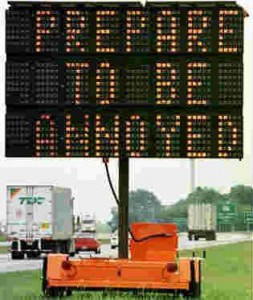What are your pet peeves?
 Appendix B: Commonly Misused Scientific Words and Expressions of Eloquent Science was inspired by a list of incorrect science expressions and annoyances maintained by Chuck Doswell. Many of Chuck’s pet peeves are included in Appendix B. I also surveyed my friends and colleagues about their pet peeves and included many of them in Appendix B.
Appendix B: Commonly Misused Scientific Words and Expressions of Eloquent Science was inspired by a list of incorrect science expressions and annoyances maintained by Chuck Doswell. Many of Chuck’s pet peeves are included in Appendix B. I also surveyed my friends and colleagues about their pet peeves and included many of them in Appendix B.
Some examples are the following.
Data. “Data” is always plural. “Datum” is the singular form, but I think saying “data point” sounds better.
Dynamics. This term is often used to describe physical processes vaguely
without actually stating what those processes are. Replace such expressions
with a more physical description.
DRAFT: The strong dynamics of the rapidly developing extratropical cyclone . . .
IMPROVED: A strong short-wave trough in the jet stream was responsible for
the rapid development of the extratropical cyclone.
t test. Formally known as Student’s t test, not “the student t test.” Student was the penname of author William Sealy Gosset, who published the test in 1908 (Student 1908).
What are your most annoying pet peeves in atmospheric science?
Submit them as comments below, or email me: eloquentscience at gmail.com.
The best ones will receive an Eloquent Science mug for your home or office.



Two examples I have are:
1) model data — should be “model output”; data refer to observations
2) southeast — should be “southeastern” when referring to a directional reference; just like you would write “The storm affected eastern Maine” you should write “The storm affected southeastern Maine”; the same applies for northeastern, northwestern, and southwestern
Also, although not related to incorrect scientific expressions, one of the most annoying things to me is when authors cannot get their references and citations correct. This is the easiest part of a paper. Yet I’ve even seen people flub up citations/references to their own papers!
I have to agree with Matt, getting the citations correct is very important. I really dislike when I review a papers reference section which is missing referenced articles, but contains unreferenced articles.
Another issue is when text that is in the body of the paper should be in the figure caption, and when caption text should be in the body of the paper.
Inconsistency can be annoying or confusing when reading an article. For example one often sees interchanging terms like weather/climatological/meteorological/atmospheric variable/parameter/quantity/factor. Most of these have specific meanings anyway (such as the difference between parameter and variable).
I’ve gone back and forth on whether “data” can be used in reference to model output. The more I’ve thought about it, the more I believe that it absolutely should be applied. The dictionary definitions of “data” are clear that it refers to information that is organized for analysis. Model output is clearly information that is organized and is analyzed.
Those getting hung up on this point should also consider what observations are. For example, satellites do not observe water vapor or rainfall or temperature. Their observations are of voltages on some detector, which are then run through a set of algorithms (models?) and turned into products. So should satellite products not be thought of as observations? I’d suggest that similar reasoning can be applied to aircraft-based or ground-based observations too. Is there any observation that doesn’t have some “model” applied to it?